My next shoot, was located in Pisa, Italy. Pisa is a city in Tuscany, Central Italy, straddling the Arno river. Although Pisa is known worldwide for its leaning tower, the city of over 90,834 residents contains more than 20 other historic churches, several medieval palaces and various bridges across the Arno. Pisa is a very popular tourist attraction, but I was excited to see the site for myself and compare how the location conflicted with my expectations. The leaning tower is constantly talked about and remains as one the most special architectural wonders in the world. I had an expectation that perhaps the tilt was exaggerated or enhanced in photographs and was consequently keen to investigate with the naked eye. Below is a contact sheet that presents all the photographs taken on the shoot.

Pisa was a very small town and I was surprised by its casual and mundane appearance. Besides the Tower and main cathedral, the town is largely narrow and regular streets equipped with shops and houses. Nevertheless, in summary I really liked the town. It felt cosy and clean but filled with history and culture. There were almost no modern or out of place buildings, securing a consistent Tuscan, countryside atmosphere.
— Its important to note that these images have been selectedwith the intention to develop with illustrations. They are not individually the best photographs from the shoot, but provide the best opportunities for overlaid drawings. —



In these three photographs I have tried to capture the attractions and sites surrounding the notorious leaning tower. All these sites are located within The Square or Miracles. The Pisa tower is one of the four buildings that make up the cathedral complex in Pisa, Italy, called Campo dei Miracoli, which means Square of Miracles. The square is not located in the center of the city as you might imagine but to the north-west of the fortified wall, almost out of the town. The square is surrounded by a beautiful green lawn where tourists and university students can lie down and relax in this setting. The square is recognized as an important center of European medieval art and one of the finest architectural complexes in the world. In the first photo I have captured a statue lying beside the leaning tower. This is a fallen angel, created by the Polish artist Igor Mitoraj. Though the statue is part of a temporary exhibit, it demonstrates the square’s abilities to showpiece art work from contemporary artists across the world. The reason I have selected this image is because I believe it will be perfect for illustration and drawing. Due to the fact that the fallen angels limbs and other body components are missing, I am provided with the opportunity to implement new ones. I can draw my own arms or perhaps implement some religious imagery throughout the background. In the second photo, I have captured a tiled dome peaking over the top of the square walls. I discovered that this dome is situated within the square graveyard, otherwise known as the Camposanto. The graveyard is an ancient monumental cemetery set on the north side of the Square of Miracles. Begun in 1277 by the architect Giovanni de Simone, it is a rectangular structure with an inner cloister with Gothic arcades. As ancient tradition would have it, the graveyard was built on dirt carried back from the Holy Land, in particular from the place where Jesus was crucified. Within the cloister you’ll find many sarcophaguses and Roman graves, used exclusively for the burial of prestigious men, while beneath the floor are graves of the nobles of Pisa. I really like this photo, and I think its simplicity works to an advantage. Nevertheless, I do think the exposure could be reduced a little in the editing stage and this will be executed if I decide to utilise this image in further stages of the project. The photo has a very minimalistic aesthetic as the clean and crisp sky dominates the composition. This will be ideal as it provides a blank canvas for me to illustrate upon. I really like the way that the graveyard dome is only just peaking over the square walls. Its almost a reminder that death is always a part of life and that it cannot be ignored nor forgotten. Despite the beauty and life symbolised through the inner square, death lingers within the background, watching.
In the final photo of the set, I have captured The Baptistery of St. John. Construction started in 1152 to replace an older baptistery, and when it was completed in 1363, it became the second building, in chronological order, in the Square of Miracles. The building is the largest baptistery in Italy and an example of the transition from the Romanesque style to the Gothic style. The lower section is in the Romanesque style, with rounded arches, while the upper sections are in the Gothic style, with pointed arches. The Baptistery is constructed of marble, as is common in Italian architecture. As it shares the same unstable ground as the tower, the baptistery also has a slight lean of 0.6 degrees towards the cathedral. I found this baptistery really beautiful and am happy with the photo I have taken of it. There is an attractive sense of light and dark as we the find details of the architecture pop into the foreground. I really like how the light source is coming from the left side and it consequently casts one side of the baptistery in light and the other in darkness. The sky works in cooperation with the image here as an absence of clouds and colourful blue tone makes the building more prominent within the landscape.
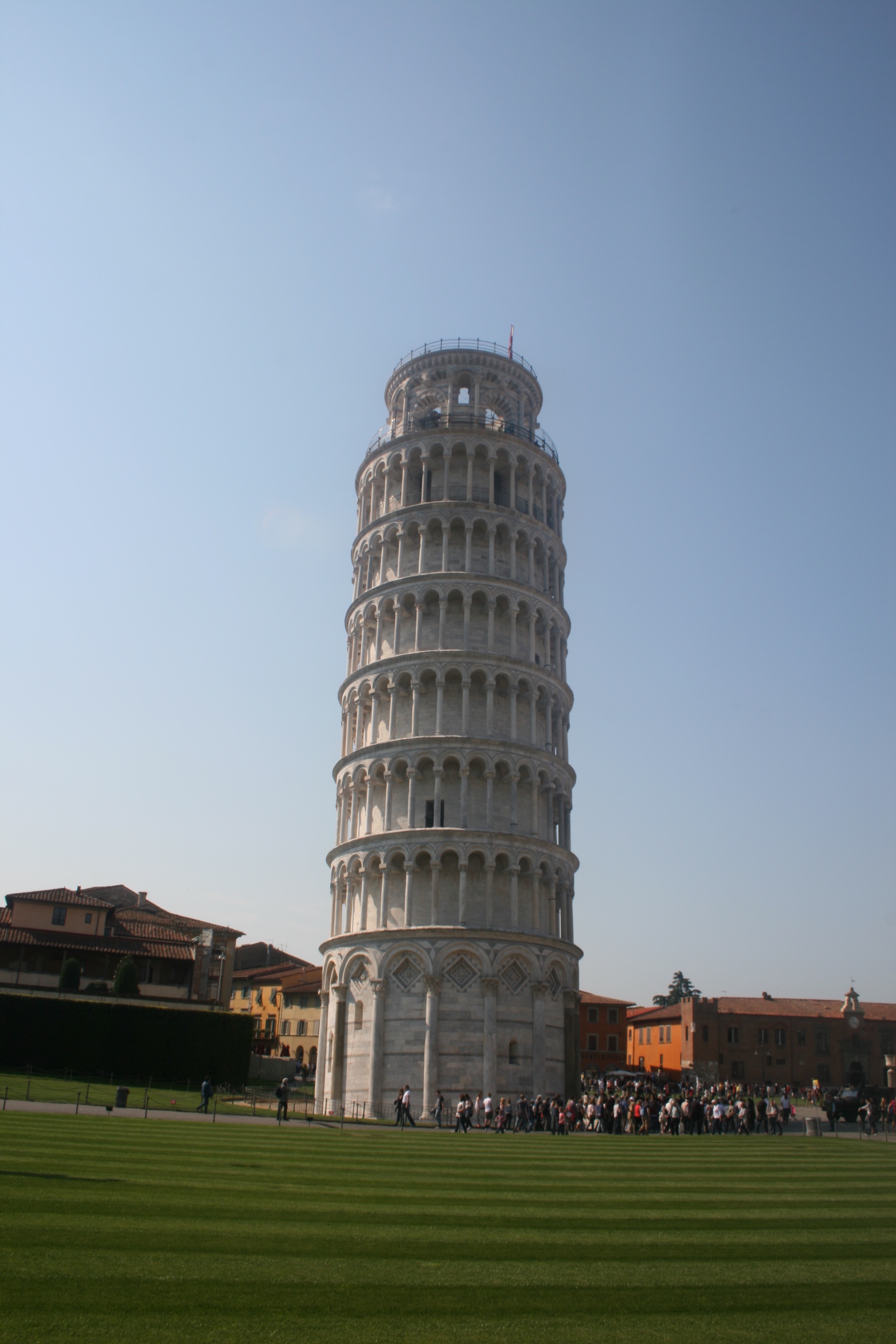



Next, we have the images that focus primarily and almost entirely on the famous Leaning Tower. Tower of Pisa is more accurately referred to simply as the bell tower, or campanile. The Leaning Tower of Pisa is the piazza’s crowning glory. Although only a third as high as the Washington Monument, it was a miracle of medieval engineering, probably the tallest bell towers in Europe. With the spiralling exterior columns ranged around eight stories, I found that the tower of Pisa looks like a massive wedding cake. The construction of Tower of Pisa began in August 1173 and continued for about 200 years due to the onset of a series of wars.The top of the leaning tower of Pisa is about 17 feet off the vertical and the tower is also slightly curved from the attempts by various architects to keep it from leaning more or falling over.Many ideas have been suggested to straighten the Tower of Pisa, including taking it apart stone by stone and rebuilding it at a different location. In the 1920s the foundations of the tower were injected with cement grouting that has stabilized the tower to some extent. In the first image, I have tried to capture the tower individually. Although the horizon line needs to be straightened, I like the image and think it would be suitable for illustration. The tower holds a cylindrical shape that exists frequently in everyday life and ordinary objects. This will make it easy to transform the tower into something mundane. The next two photos share a nice sense of depth and perspective. There is a clear perception of dimension with immerses the viewer. Both photos are essentially the same, except one is landscape in orientation and the other is portrait. The benefit of the portrait is that we can get a complete spectacle of the tower, allowing us to see its peak. As a result, I prefer this version of the image. In addition to this, there is also a small pigeon sat upon the statue that is more identifiable within the first photo. In the final photograph, I have tried to capture both the Tower and the Cathedral. Pisa Cathedral is a medieval Roman Catholic cathedral dedicated to the Assumption of the Virgin Mary, in the Square of Miracles in Pisa. It is a notable example of Romanesque architecture. Construction on the cathedral began in 1063 by the architect Buscheto, and expenses were paid using the spoils received fighting against the Muslims in Sicily in 1063. The church was erected outside Pisa’s high middle age-era walls, to show that Pisa that was so powerful, it had no fear of being attacked. I like this photo and feel like it a complete overview of the square and what to expect from Pisa. The marble of both buildings beautifully reflects the natural sunlight rendering both sites as bright and powerful in lighting.


















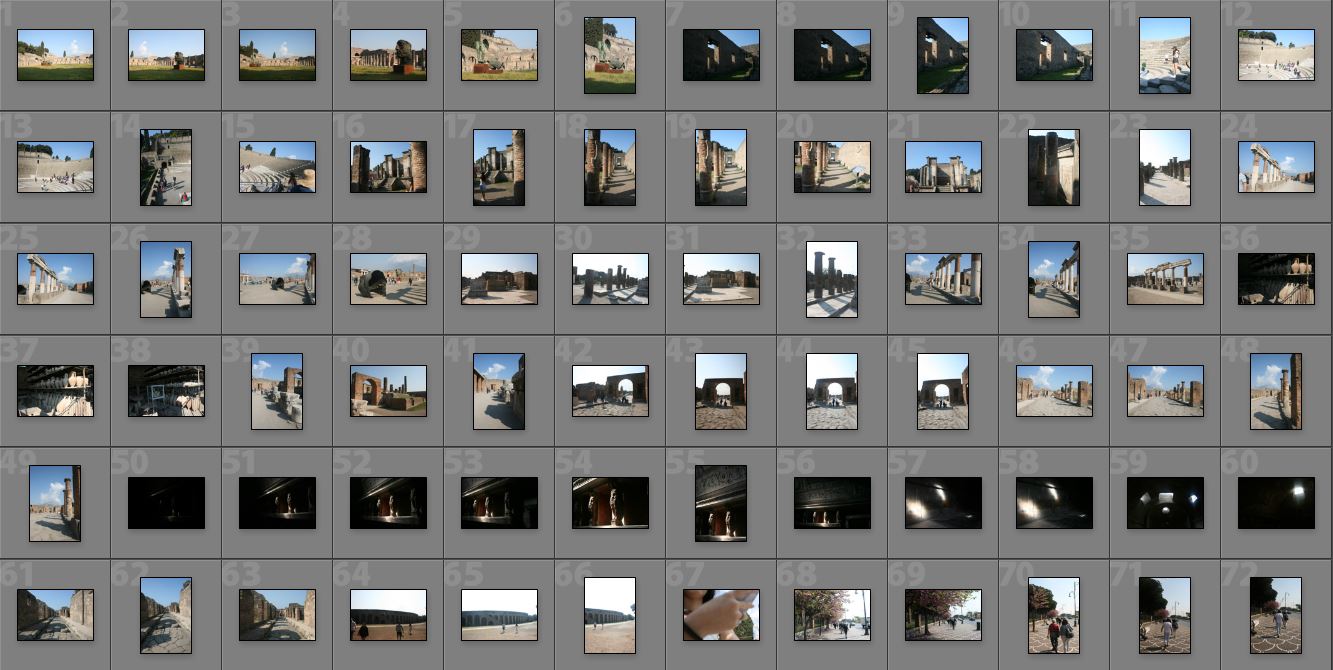



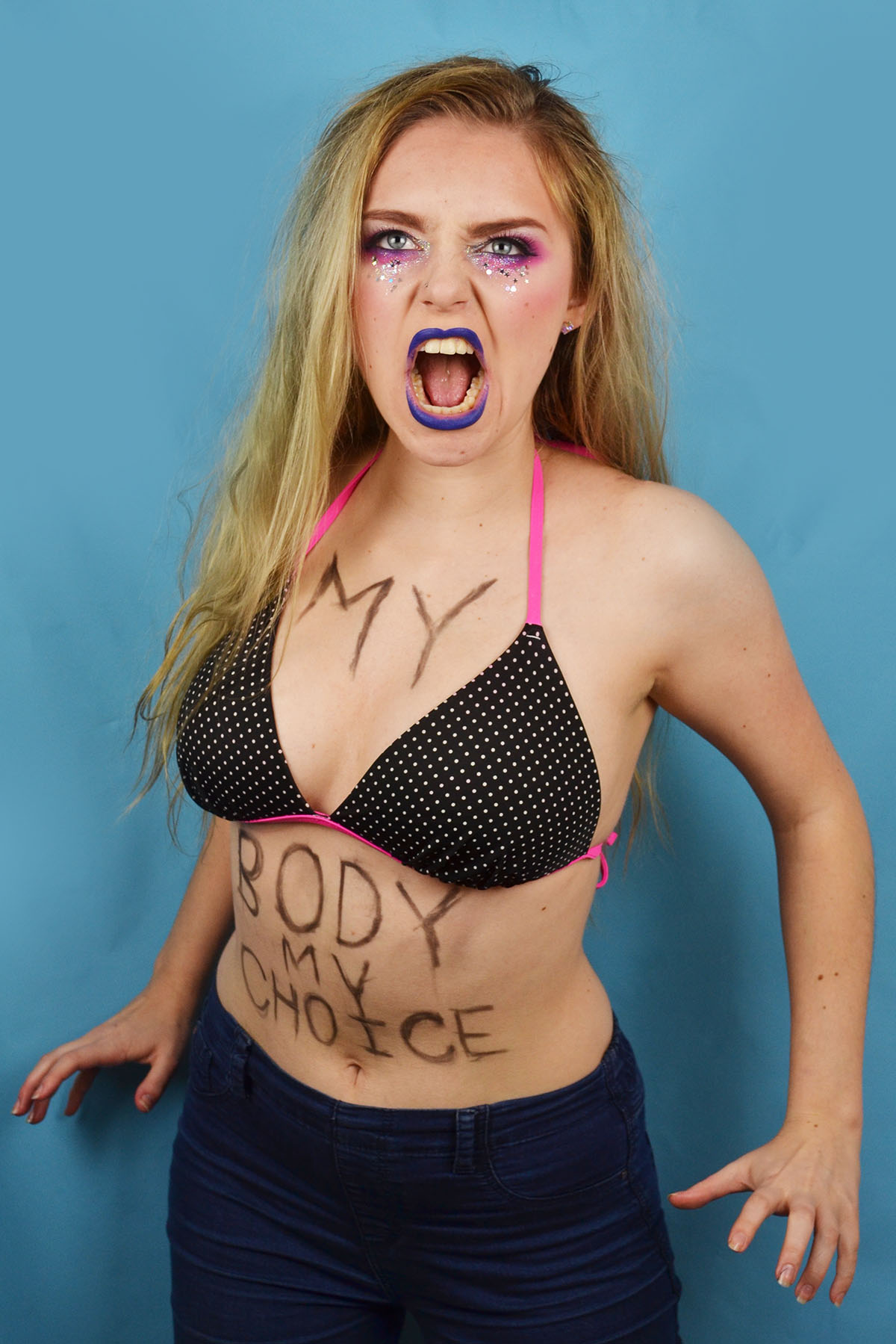
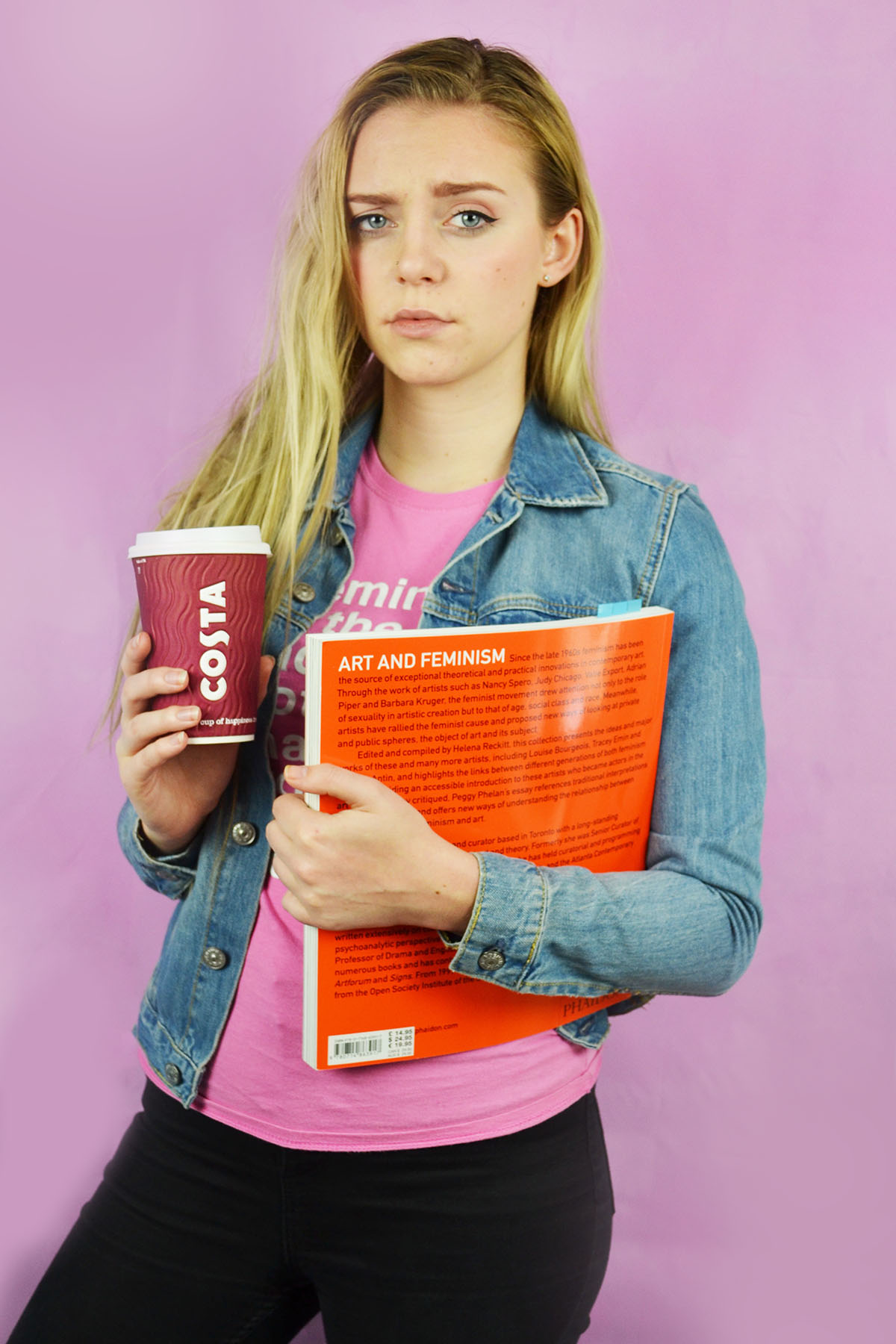














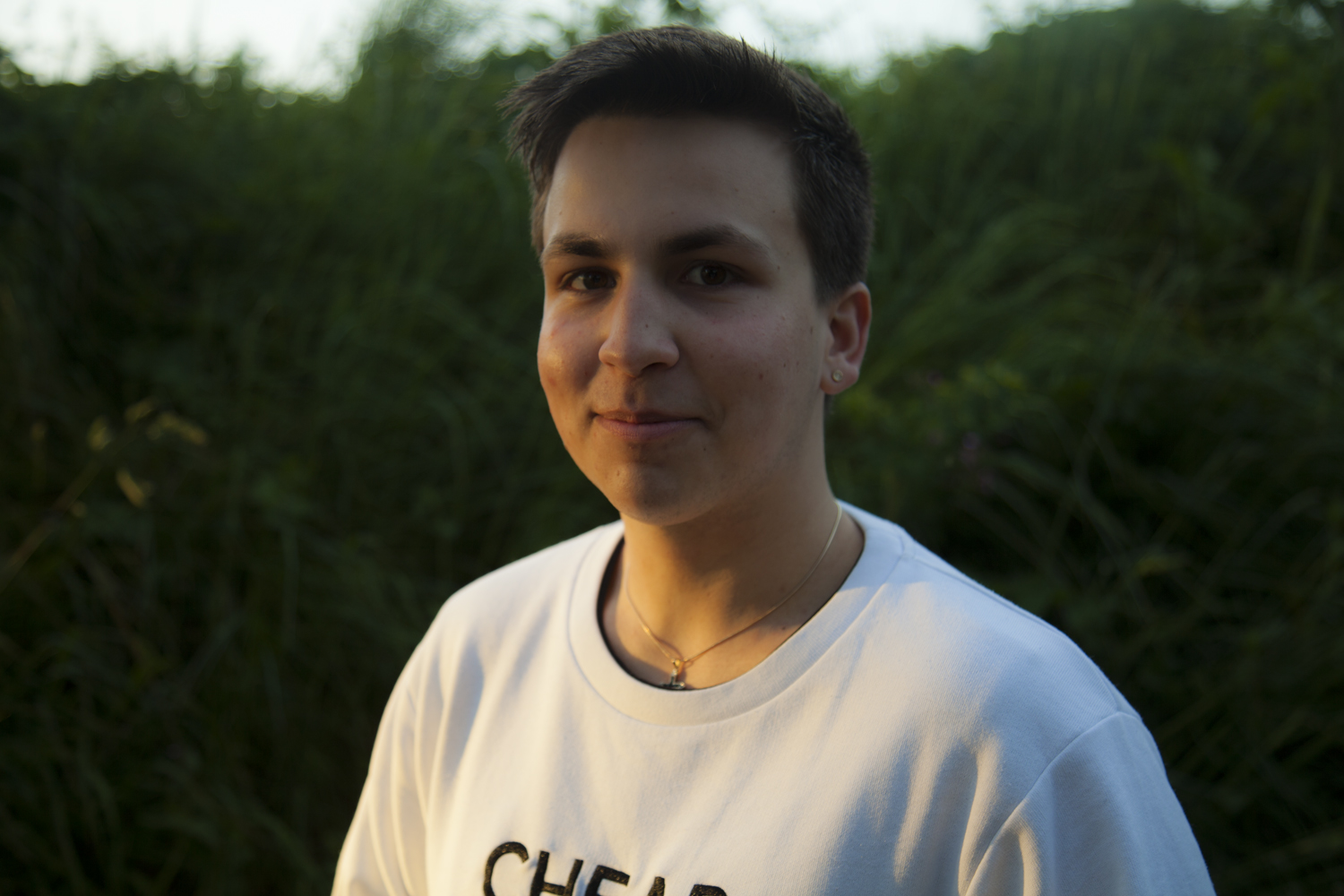

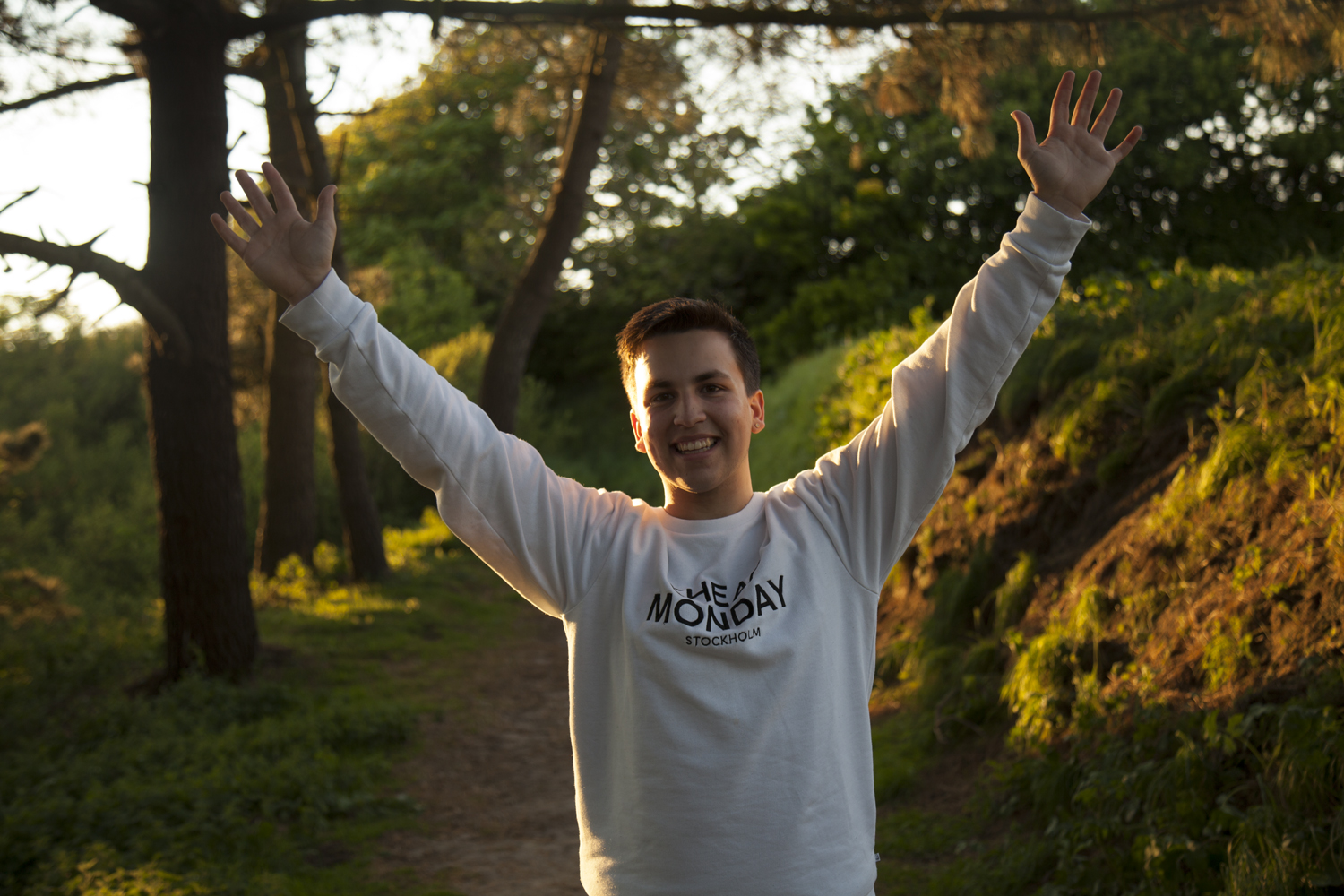

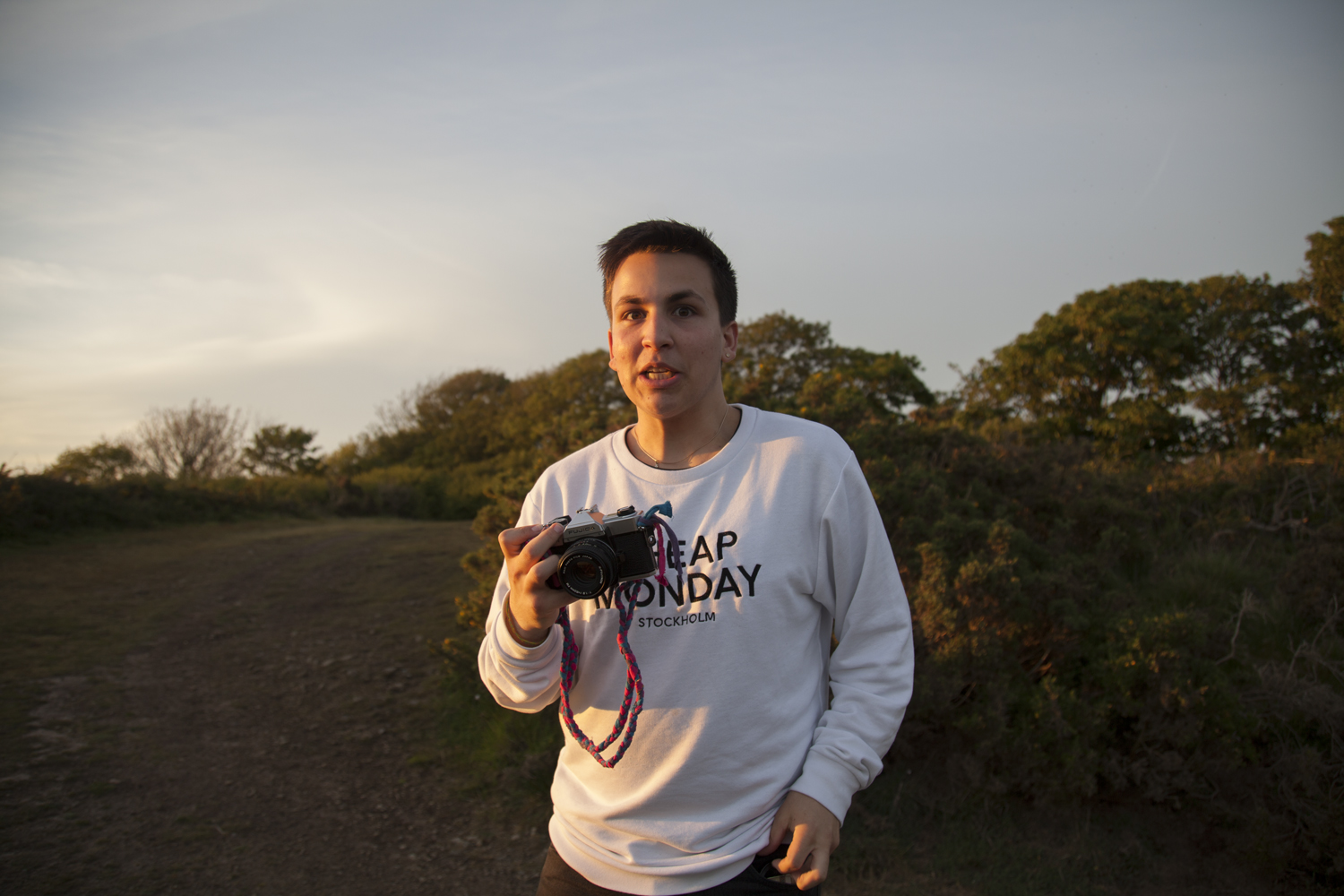



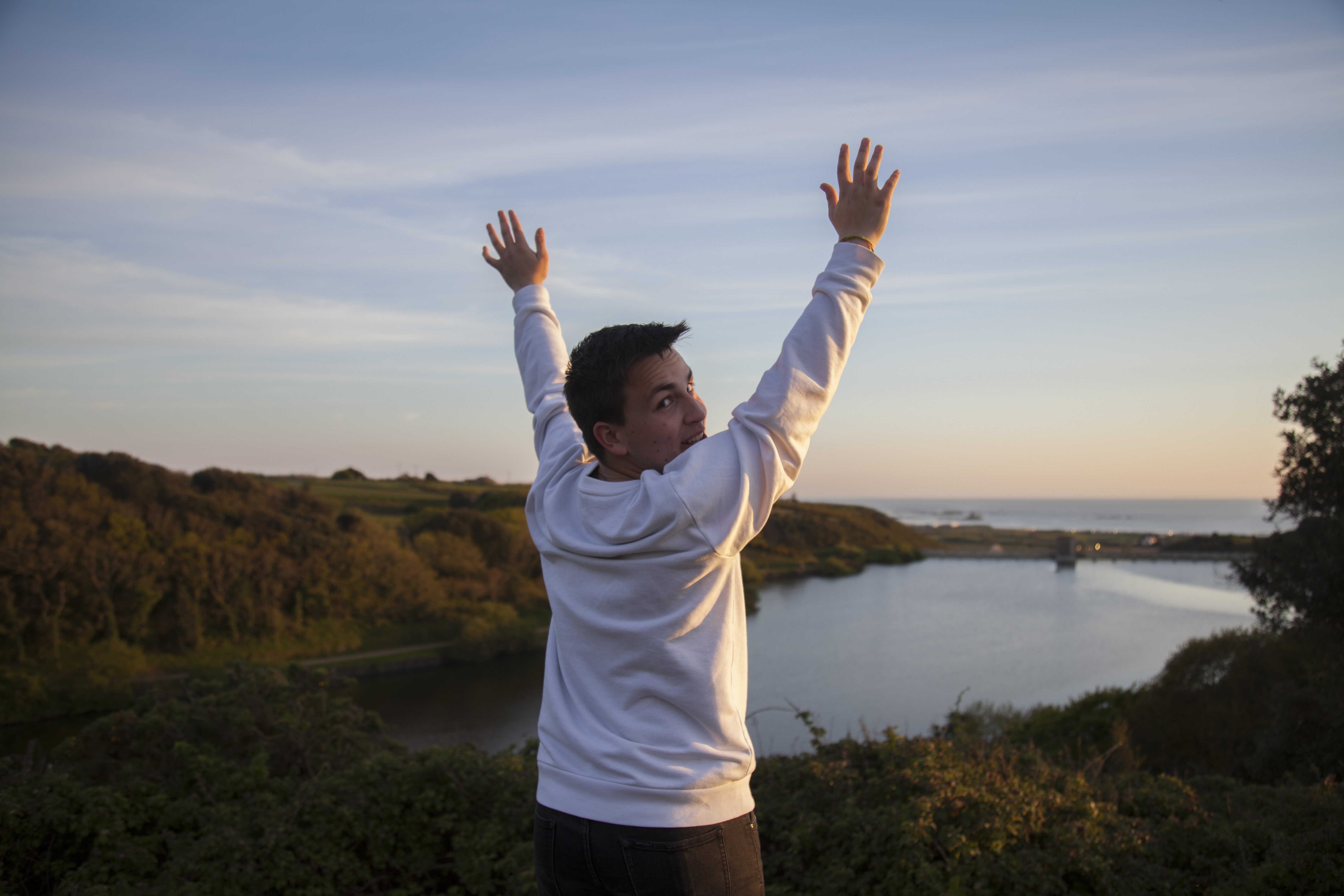






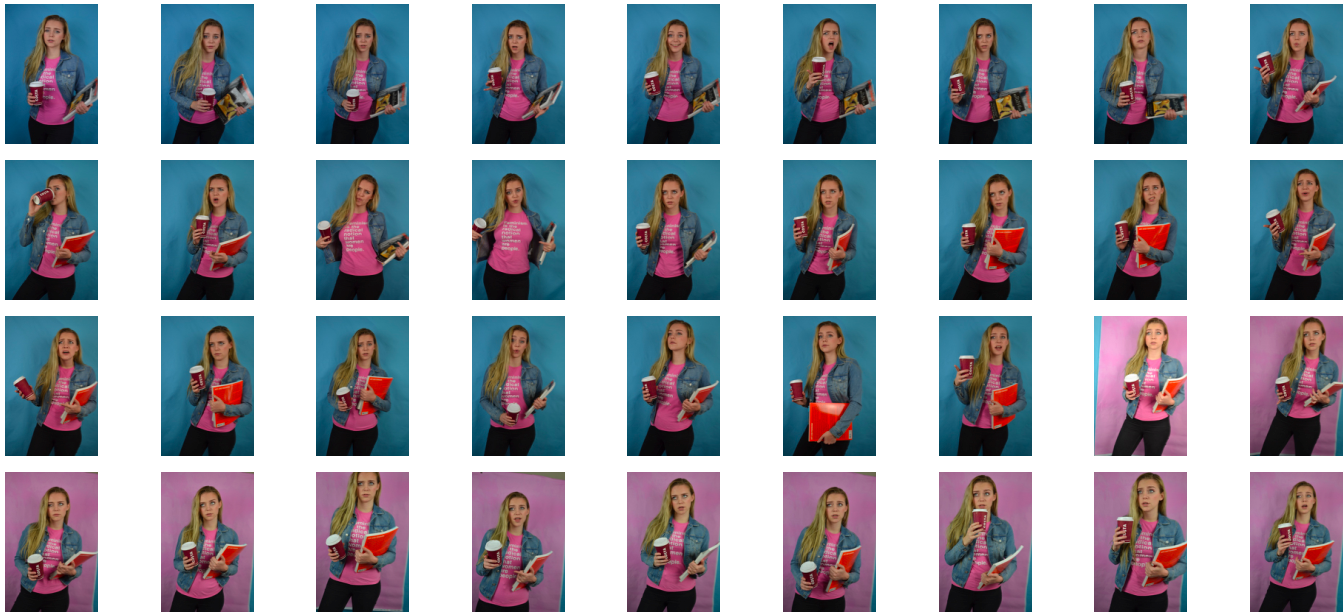



 When selecting my final outcomes out of the images above I wanted to make sure that I included a varied selection of each subject I have created. Below I have chosen five photographs (out of the 12 original images) that each show its subject matter either from a different viewpoint or in a different light. When it came to editing these photographs the first thing I did to all of them was make them more dramatic and eye-catching by playing with the exposure, shadows and contrast. After this, I judged each photograph individually and went through my normal editing routine of changing things like colour, temperature, clarity, saturation, highlights and blacks. The reason I have decided to keep all these outcomes in full colour is because they are aimed to catch my viewer’s attention and really stand out.
When selecting my final outcomes out of the images above I wanted to make sure that I included a varied selection of each subject I have created. Below I have chosen five photographs (out of the 12 original images) that each show its subject matter either from a different viewpoint or in a different light. When it came to editing these photographs the first thing I did to all of them was make them more dramatic and eye-catching by playing with the exposure, shadows and contrast. After this, I judged each photograph individually and went through my normal editing routine of changing things like colour, temperature, clarity, saturation, highlights and blacks. The reason I have decided to keep all these outcomes in full colour is because they are aimed to catch my viewer’s attention and really stand out. The final outcome above is my favourite result from this creative symbolism shoot. To create this subject matter I used a black sheet of fabric I had at home as well as a Nutella jar lid, some old fishing rope and loads of plastic bottle caps that I found on a few of Jersey’s beaches; ultimately arranging them into the shape of a fish. Although abstract and eye-catching the context of this image is to spread awareness about something very bleak. The reason I have created a fish is because it is a good symbol for the ocean and its ecosystem and can give the viewer an idea about the wider message I am trying to get across. I love how I have captured the composition of this subject matter and enhanced its dramatic intensity by manipulating colours, contrast and highlights.
The final outcome above is my favourite result from this creative symbolism shoot. To create this subject matter I used a black sheet of fabric I had at home as well as a Nutella jar lid, some old fishing rope and loads of plastic bottle caps that I found on a few of Jersey’s beaches; ultimately arranging them into the shape of a fish. Although abstract and eye-catching the context of this image is to spread awareness about something very bleak. The reason I have created a fish is because it is a good symbol for the ocean and its ecosystem and can give the viewer an idea about the wider message I am trying to get across. I love how I have captured the composition of this subject matter and enhanced its dramatic intensity by manipulating colours, contrast and highlights. The next final outcome displayed above depicts a jellyfish made with blue rope creating movement in the background, bottle caps forming the shape of its head, and separated strands rope as the tentacles. Although I was not really planning on creating this subject matter, as jellyfish are not really symbols of the whole underwater eco-system, I have found that this idea has, in fact, worked very well. The meaning of this subject is to show a futuristic world where all marine life has been replaced by our waste. This is futuristic tone is emphasised by the neon colours I have created and the black dark ocean background. Overall I think this abstract piece has a really strong centred composition and I have managed to create a really intriguing yet ominous tone.
The next final outcome displayed above depicts a jellyfish made with blue rope creating movement in the background, bottle caps forming the shape of its head, and separated strands rope as the tentacles. Although I was not really planning on creating this subject matter, as jellyfish are not really symbols of the whole underwater eco-system, I have found that this idea has, in fact, worked very well. The meaning of this subject is to show a futuristic world where all marine life has been replaced by our waste. This is futuristic tone is emphasised by the neon colours I have created and the black dark ocean background. Overall I think this abstract piece has a really strong centred composition and I have managed to create a really intriguing yet ominous tone.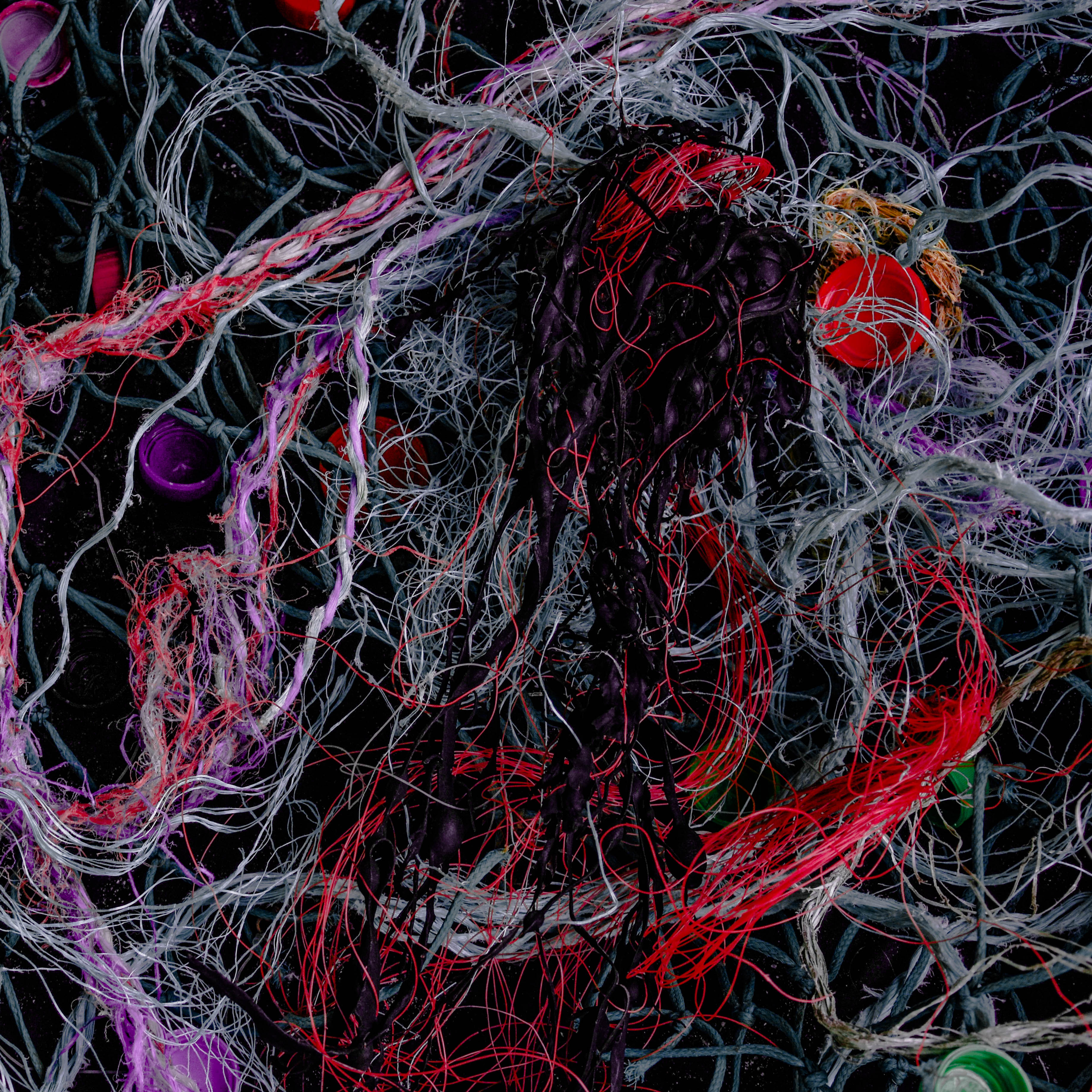 Next is an abstract image that has a very different subject matter to all my other final outcomes from shoot. This photograph depicts a massive amount of material and plastic fishing ropes/lines along with bottle caps and an oddly shaped piece of seaweed in the middle. The shocking thing about this, for me, is the how easily I managed to source these discarded materials washed up on a few of Jersey’s famous beaches. The symbolic message behind this image is pretty much a realistic version of the final above, where a jellyfish-shaped creature is being engulfed and tangled in pollution. The reason I chose this as final outcomes is because of the intriguing way I have managed to digitally manipulated the colours of certain ropes/lines and toned down all the rest.
Next is an abstract image that has a very different subject matter to all my other final outcomes from shoot. This photograph depicts a massive amount of material and plastic fishing ropes/lines along with bottle caps and an oddly shaped piece of seaweed in the middle. The shocking thing about this, for me, is the how easily I managed to source these discarded materials washed up on a few of Jersey’s famous beaches. The symbolic message behind this image is pretty much a realistic version of the final above, where a jellyfish-shaped creature is being engulfed and tangled in pollution. The reason I chose this as final outcomes is because of the intriguing way I have managed to digitally manipulated the colours of certain ropes/lines and toned down all the rest. Lastly are two more images that are aimed to give an insight into the problem of ocean pollution and hopefully make the viewer think twice about how they discard their waste. The meaning behind these two photographs is quite similar in that they both show a futuristic ocean scene that has been completely taken over by synthetic substances. The first piece on the left is simply a differently captured and edited version of the larger final outcome above. I have chosen to add this to my results blog post as well because I love the dramatic effect the subject has it fades into an ominous black border. The last image is of my fourth subject matter that I had previously planned out to depict a wave created by pollution. I love this outcome as I think the message is really clear as well as the composition of materials showing movement and intricate textures.
Lastly are two more images that are aimed to give an insight into the problem of ocean pollution and hopefully make the viewer think twice about how they discard their waste. The meaning behind these two photographs is quite similar in that they both show a futuristic ocean scene that has been completely taken over by synthetic substances. The first piece on the left is simply a differently captured and edited version of the larger final outcome above. I have chosen to add this to my results blog post as well because I love the dramatic effect the subject has it fades into an ominous black border. The last image is of my fourth subject matter that I had previously planned out to depict a wave created by pollution. I love this outcome as I think the message is really clear as well as the composition of materials showing movement and intricate textures.







